Linearly Mapping from Image to Text Space
EffL LAB. Regular Seminar
Linearly Mapping from Image to Text Space (ICLR’23)
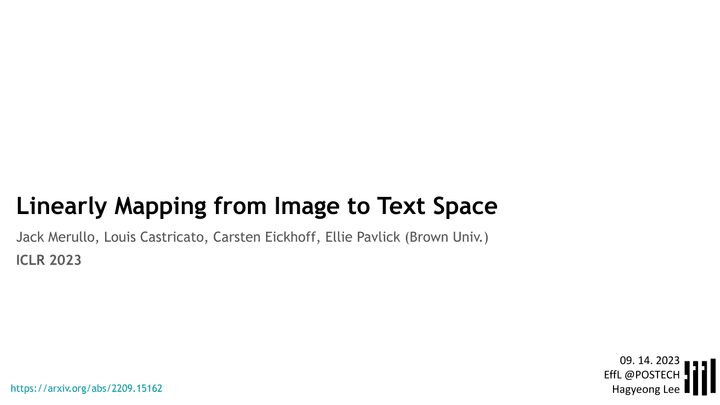
Problem of Language Model
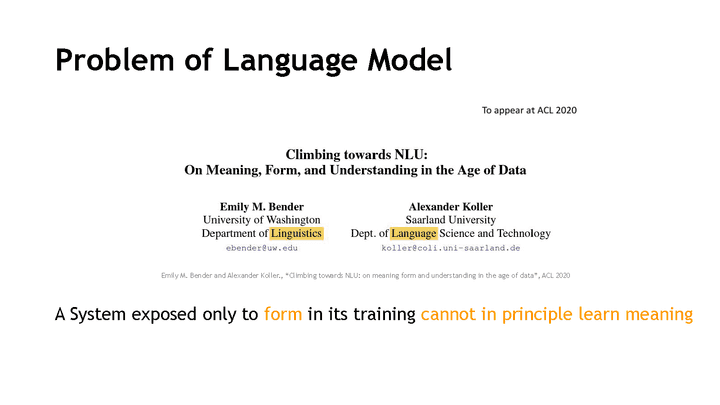
Emily M. Bender and Alexander Koller., “Climbing towards NLU: on meaning form and understanding in the age of data”, ACL 2020
A System exposed only to form in its training cannot in principle learn meaning
##Form & Meaning in Language**
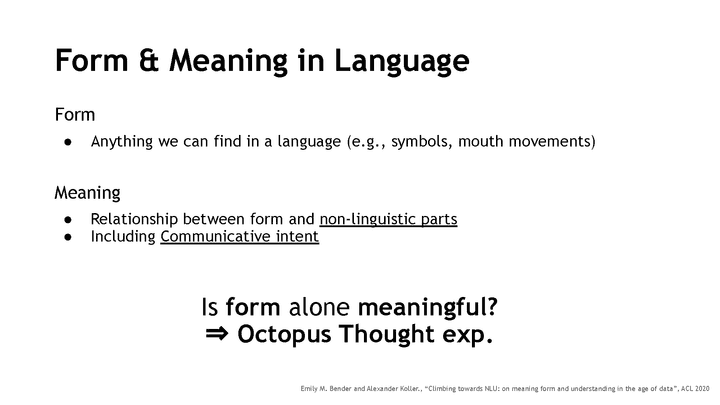 Form
Form
- Anything we can find in a language (e.g., symbols, mouth movements)
Meaning
- Relationship between form and non-linguistic parts
- Including Communicative intent
Is form alone meaningful?
Octopus Thought exp.
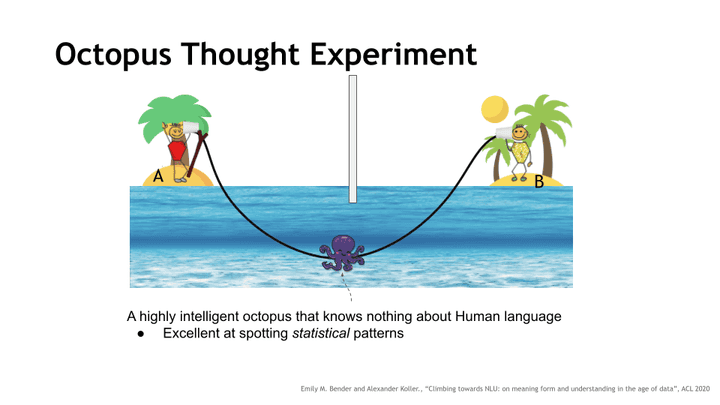 A highly intelligent octopus that knows nothing about Human language
A highly intelligent octopus that knows nothing about Human language
-
Excellent at spotting statistical patterns
-
Observed the use of certain words in similar forms
-
Maybe noticed a common lexical pattern
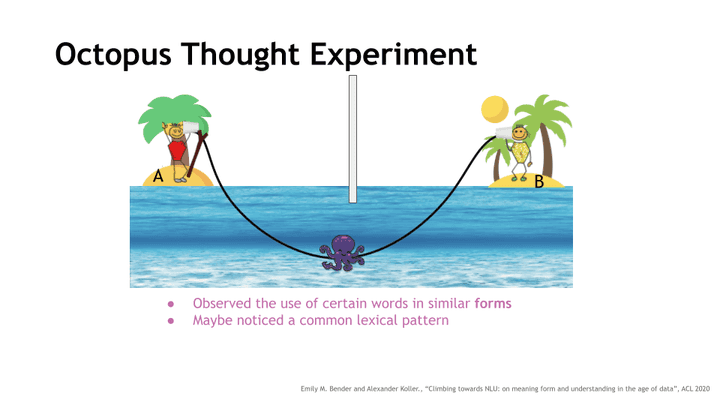
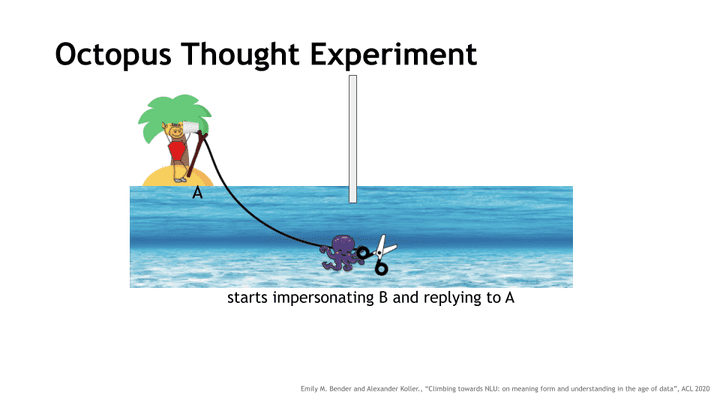 starts impersonating B and replying to A
starts impersonating B and replying to A
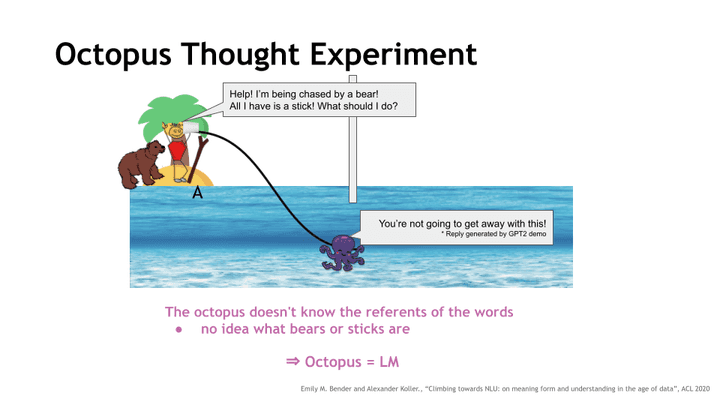 **The octopus doesn’t know the referents of the words no idea what bears or sticks are
**The octopus doesn’t know the referents of the words no idea what bears or sticks are
- => Octopus = LM
Octopus Thought Experiment - Conclusion
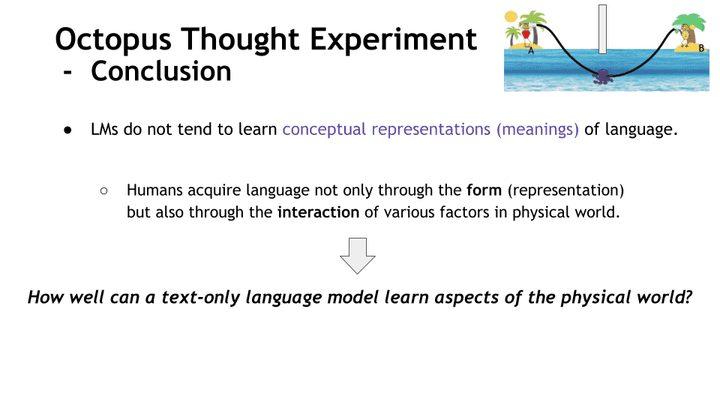
- LMs do not tend to learn conceptual representations (meanings) of language.
- Humans acquire language not only through the form (representation)
but also through the interaction of various factors in physical world.
*How well can a text-only language model learn aspects of the physical world?
Previous Works
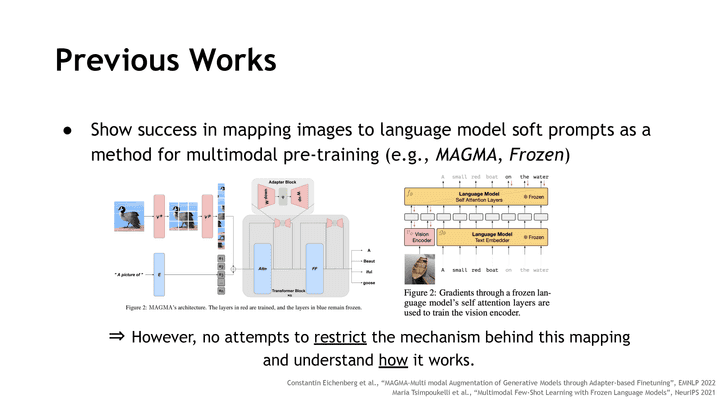
-
Show success in mapping images to language model soft prompts as a method for multimodal pre-training (e.g., MAGMA, Frozen)
-
Constantin Eichenberg et al., “MAGMA–Multi modal Augmentation of Generative Models through Adapter-based Finetuning”, EMNLP 2022
-
Maria Tsimpoukelli et al., “Multimodal Few-Shot Learning with Frozen Language Models”, NeurIPS 2021
-
-
However, no attempts to restrict the mechanism behind this mapping and understand how it works.
Language & Image representation
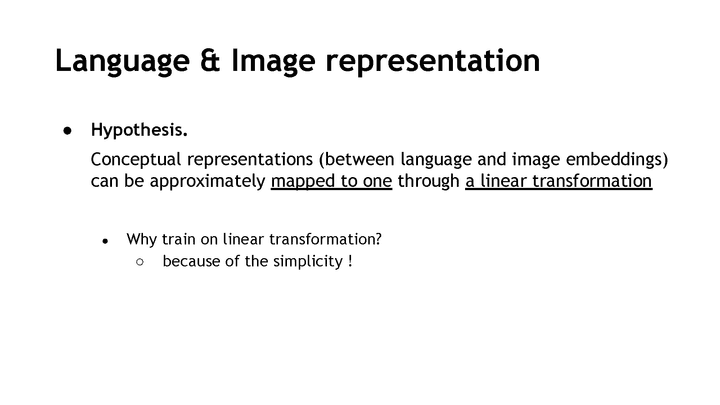
- Hypothesis.
Conceptual representations (between language and image embeddings) can be approximately mapped to one through a linear transformation
- Why train on linear transformation?
- because of the simplicity !
Method
 LiMBeR (Linearly Mapping Between Representation spaces)
LiMBeR (Linearly Mapping Between Representation spaces)
- Train linear projections from image representations into the text space of a language model to produce image-to-text tasks
= transform an image representation into “soft prompts”
(do not correspond to discrete language tokens)
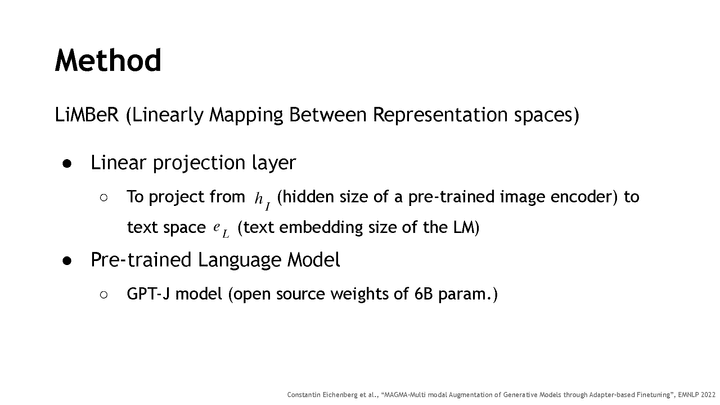
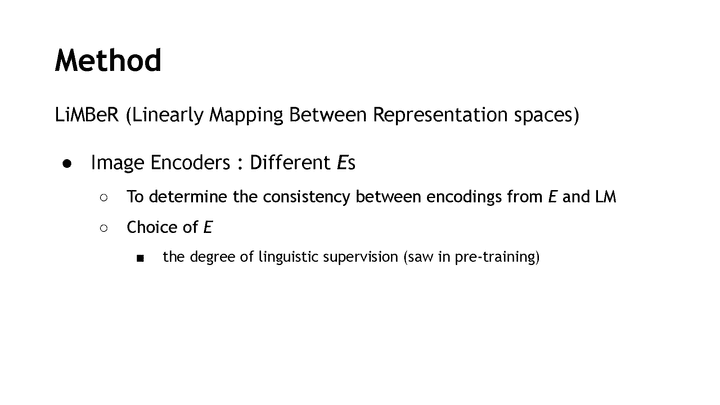
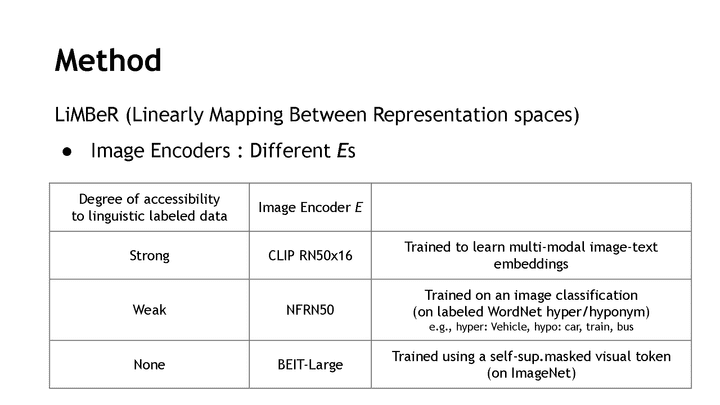
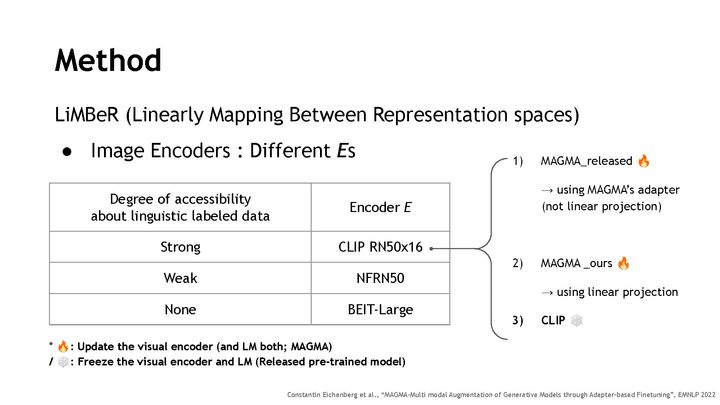

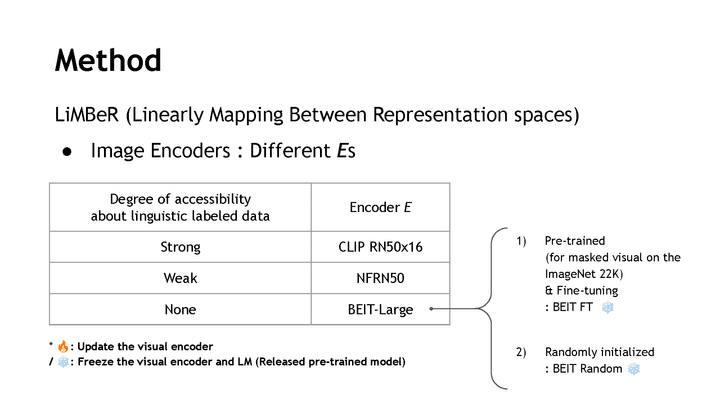
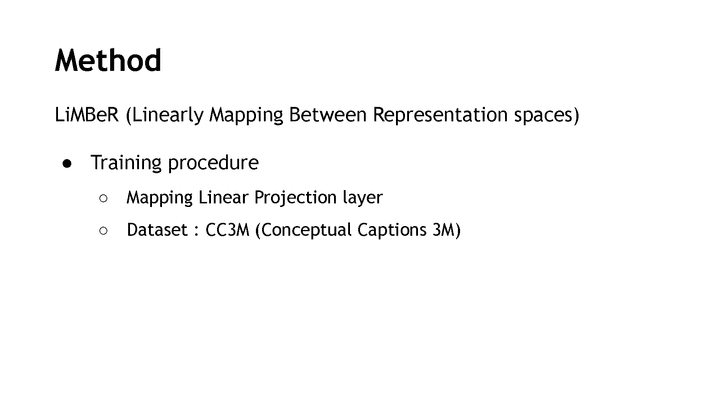
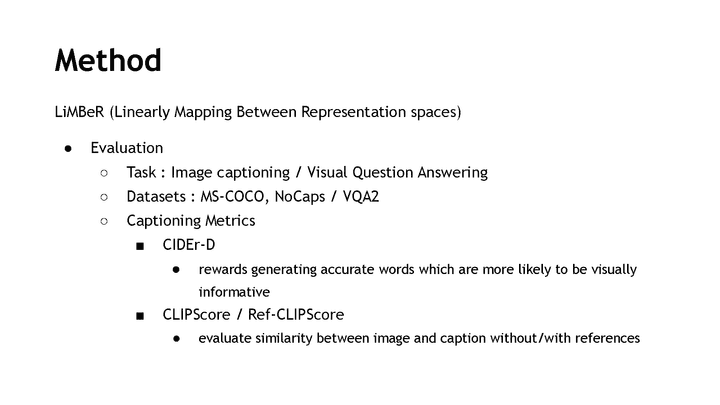
Experiments : Captioning
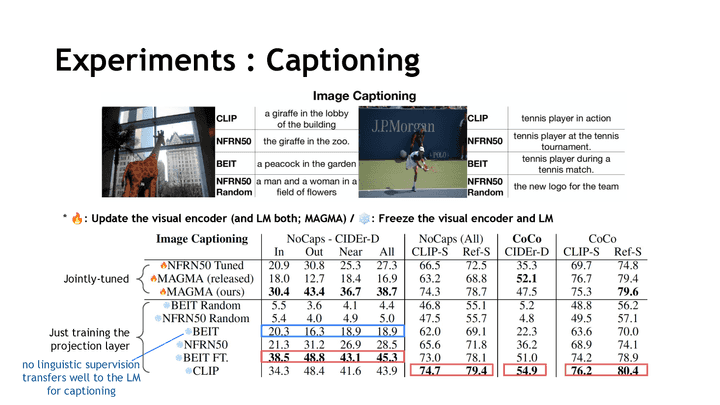

Experiments : VQA (Visual Question Answering)
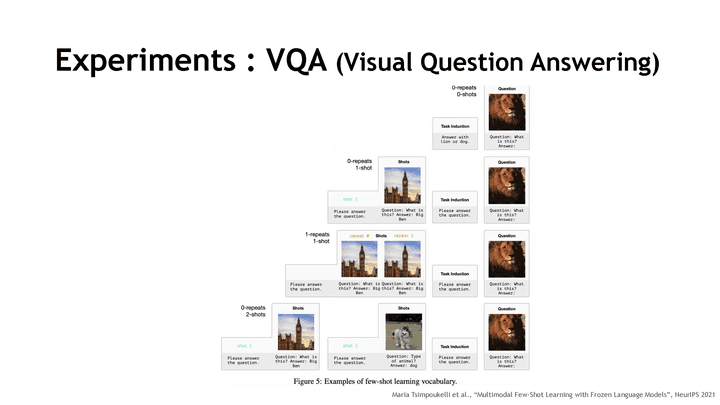
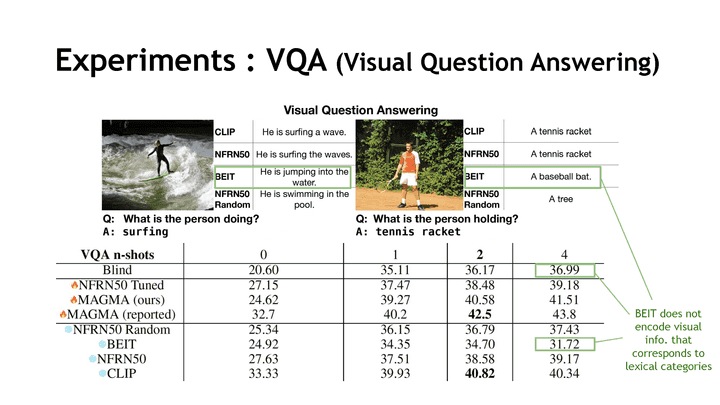
Experiments : Visual Concepts
 Why BEIT prompts perform so poorly for VQA despite performing decently for captioning?
Why BEIT prompts perform so poorly for VQA despite performing decently for captioning?
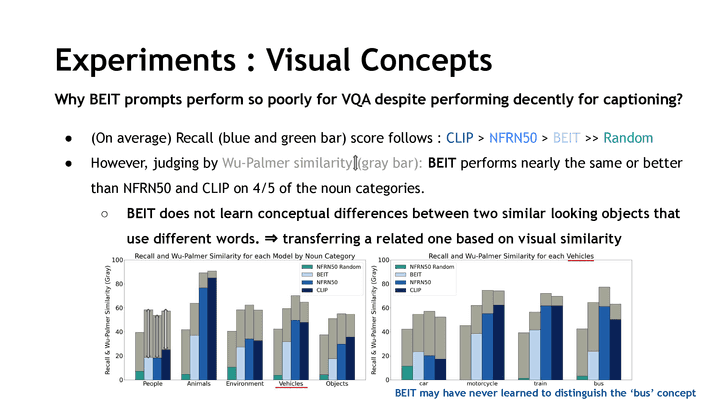
- Hypothesis. BEIT does not encode visual info. that corresponds to lexical categories
- Metrics
- Wu-Palmer similarity
- Calculate the distance between the GT and the generated word in the WordNet taxonomy
- Measure how close a word was to the correct answer
Conclusion
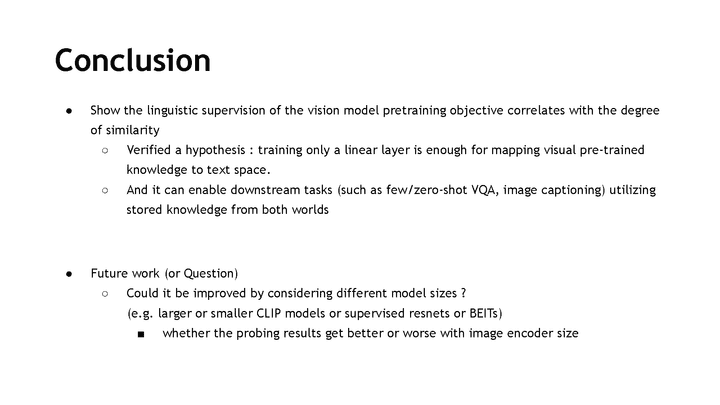
- Show the linguistic supervision of the vision model pretraining objective correlates with the degree of similarity
- Verified a hypothesis : training only a linear layer is enough for mapping visual pre-trained knowledge to text space.
- And it can enable downstream tasks (such as few/zero-shot VQA, image captioning) utilizing stored knowledge from both worlds
- Future work (or Question)
- Could it be improved by considering different model sizes ?
(e.g. larger or smaller CLIP models or supervised resnets or BEITs)
- whether the probing results get better or worse with image encoder size